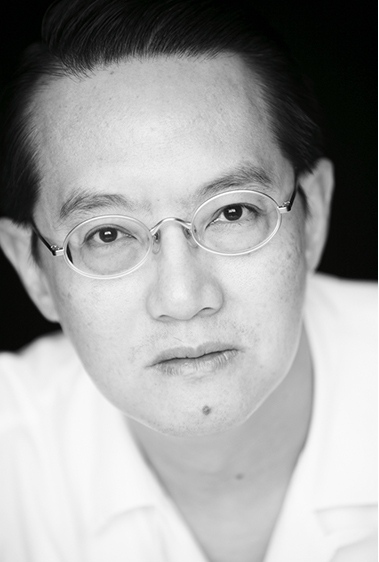by John Evans,
Assistant Editor, The Chronicle
There are common misconceptions about the positions of facial muscles that need to be understood and corrected in order to get the best results and highest patient satisfaction when performing eyebrow lifting and shaping. That’s according to Dr. Woffles Wu, a cosmetic and craniofacial surgeon from Singapore, speaking at the Cosmetic Update Congress held in Vancouver in April.
“The corrugator muscle is really a lot more horizontal than we think it is,” he said, showing slides picturing the facial musculature. “Certainly many of the stylized anatomical drawings which we have seen in the past have not helped in our placement of Botox. And you can see that the corrugator actually lies directly behind the eyebrow itself, and it does not go into the forehead at all.”
The complex facial movement of frowning involves the interaction of many muscles, and the skin itself, Dr. Wu said, including the characteristic hooding. “The hooding is not the corrugator alone, it’s the skin which is folding downwards as a result of corrugator and other muscle activity such as the superior and lateral orbicularis,” he said.
“These are the muscles responsible for frowning: you’ve got the corrugators and the depressor supercilii. You’ve got the procerus, you’ve got the superior and lateral orbicularis, which is more important than you think,” said Dr. Wu.
During the talk, Dr. Wu described his technique for lifting and shaping the eyebrows using Botox to take advantage of the anatomy of the face. He said he puts three injections in the corrugator, starting from the medial end of the eyebrow, into the head, the body and the tail of the muscle. He also injects once into the procerus, and once into the superior orbicularis. “If you don’t hit that you will not get rid of the hooding,” he said. The traditional crows feet injections on the side of the lateral ovine are also targets.
“For the forehead, if I have a new patient, I usually like to start off with injections just up the midline of the forehead, and not into the lateral aspect of the forehead at all,” said Dr. Wu. “That makes sense because if you’re trying to get a brow lift, and you’ve got to put Botox into the lateral forehead, you’re going to depress the brow, at least make it immobile. And that’s the frontalis, it’s the only muscle that elevates the brow.”
Indicating a slide showing a frowning patient, Dr. Wu said “You can see again that very strong orbicularis hooding. And it’s not just the corrugator itself; it is the orbicularis that contributes greatly to this.”
“So you need to negate that, if you want to get a nice smooth arched eyebrow,” said Dr. Wu. With just a little bit of Botox to the medial end of the eyebrow, before injecting the body and tail of the corrugator, the patient’s eyebrow was still quite flat when trying to frown. After treating those areas, he said you can see that the patient’s eyebrow attitude was already a little higher and more arched. However the lateral orbicularis was still functioning and crinkling was still visible on the side.
“So if we now give some Botox there, you’ll see that it really allows the brow to arch upwards,” said Dr. Wu. “So that’s the way I like to get a brow lift.”
Dr. Wu’s eyebrow lift technique includes injections of 2 to 4 units up the middle of the forehead, he said. “Some may think, ‘Well why are you going up the middle of the forehead, when there’s actually no frontalis there? There’s only supposed to be an aponeurosis’ but there’s sufficient diffusion laterally to hit the medial edges of each head of the frontalis,” he said. “That is sufficient to get rid of most of the wrinkles in the central part of the forehead, and yet allow the eyebrow to elevate.”
Taking into account the characteristics of a given patient is important for getting satisfactory results, said Dr. Wu. “You have to be sensitive to the age of the patient and the height and position of the eyebrow. Older people, as you know, have slightly higher eyebrows so they look more appropriate that way.”
“Now in a younger person you want to have a lower medial aspect of the brow, and maybe a little higher lateral aspect of the brow,” said Dr. Wu. In such a case he said he would widen the central injections a little bit, by perhaps a finger’s breadth, and if the goal was to get a really flared appearance, then he would widen that a little bit more.
Spot deformities were seen after such treatments 10 years ago, said Dr. Wu. “That was because there was a little bit too much Botox in the central one third of the forehead, and none in the lateral. And that’s why you get that very peculiar evil look,” he said.
For male patients, keeping the brows flatter is more desired, said Dr. Wu, saying that in such cases he will put 1 or 2 drops of Botox into the lateral forehead.
Another example case Dr. Wu cited was a patient who more naturally pulled more with the muscles in the centre of her forehead. “She gets this strange appearance of the eyebrows. If we want to drop it, again we’d put the Botox down the middle of the forehead. Drop the medial end and give the eyebrow a better proportion, so that the lateral is higher than the medial. Now what about the lateral forehead? That’s where we came up with the concept of micro Botox,” he said.
Micro Botox, Dr. Wu said, is a technique of injecting highly dilute Botox superficially into the dermis, and subdermally, to relax only the superficial fibres of the frontalis – reducing fine lines and wrinkles but still permitting the frontalis to move for a more natural appearance.


